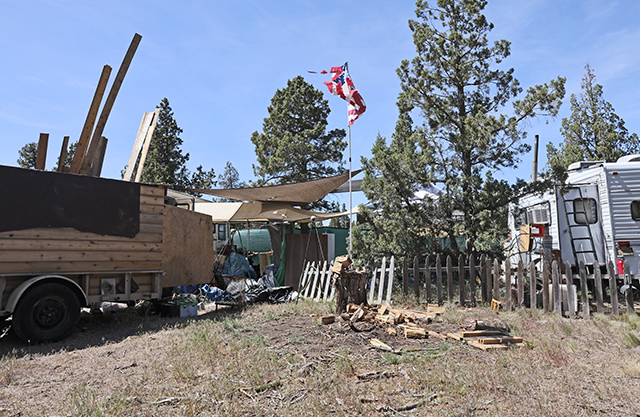Central Oregon districts keep teacher shortage at bay
Published 12:00 am Monday, April 16, 2018

- High Lakes Elementary second grade teacher Angie Gates reads the Dr. Seuss book "Wacky Wednesday" to a group of first and second graders on Friday, March 2, 2018, in Bend. (Joe Kline/Bulletin photo)
Despite a teacher shortage around the country, school districts in Central Oregon have really only felt the pinch of a teacher shortage when trying to fill positions for math, science and special-education classes.
Instead, the charm of Central Oregon helps recruit licensed teachers and allows districts to keep most vacancies to a minimum.
“Especially in Prineville, we find that many people want to come to Central Oregon and it doesn’t matter what the district is,” said Kurt Sloper, Crook County Middle School principal. “Every community has its strengths or its pros and cons, but I think we are very fortunate that we are in Central Oregon, even with the teacher shortage. Central Oregon brings a lot of good, qualified candidates to all of our districts.”
The Redmond and Bend-La Pine school districts have been co-hosting the Central Oregon Education Job Fair since 2013, and the ability to bring hundreds of educators to Central Oregon has been beneficial for all districts, said Lynn Anderson, director of human resources for the Redmond School District. The job fair encourages coordination between districts that helps résumés get into the right hands and positions filled, though a handful of positions remain tougher to fill.
“The competition for people with math or science skills is tough because there are so many other opportunities that are more lucrative,” Anderson said. “Teaching is complex and hard work and folks might choose something else. It’s a tough job.”
Teaching positions in elementary schools are the easiest to fill because of the nature of a single classroom of kids versus teaching a specific subject at a higher level to many more students throughout the day, Anderson said.
“The easier-to-fill positions are elementary teacher positions, which I think are actually some of the hardest (jobs),” she said. “They have the advantage of a contained classroom the whole school year and you can get to know your kids and your parents but they are teaching everything. Math, reading, social studies (and) science. They are expected to know a lot to be highly effective.”
As for teaching math or science at a middle or high school level?
Some qualified people might choose an alternate career.
“There’s other job opportunities out there that probably pay more and people really have to have the heart to work with kids,” said Jon Lindsay, human resources director for licensed staff at the Bend-La Pine school district. “You have to want to make a difference with kids and in the classroom to go into teaching.”
Most districts are faced with the challenge of finding qualified teachers for special education, as well, he said, though that’s a trend felt in any district anywhere.
In the annual edition of “Teacher Shortage Area Nationwide Listing,” recently published by the U.S. Department of Education, Oregon shows a constant struggle to fill those same positions.
According to the report, positions for special education teachers or specialists in addition to math and Spanish teachers have been consistently vacant from 2013 to the current school year in Sherman, Lake, Grant and Gilliam counties. The strain on professionals in those classrooms is a tough pill to swallow, said John Larson, president of the Oregon Education Association.
“I may be biased but teaching is the best career anyone can have, but for some people, the money is simply not worth the workload,” he said. “It takes a very special person to put time and energy into special education to do it justice. It’s a lot more difficult to be in special education.”
In addition to competing with other industries, universities have to be more creative when recruiting students into education programs.
At the University of Oregon there has been a slight decline in students declaring a major in education when they start school, though the trend is on the verge of swaying in favor of education, said Randy Kamphaus, dean of the College of Education.
Educators are working to improve the pipeline from student to teacher and condensing the length of the program to reduce tuition costs, he said.
“The state of Oregon has been very assertive about trying to knock down the barriers to education to make it as efficient as possible without sacrificing quality,” Kamphaus said. “There’s definitely been a decline, but thankfully I think we are close to turning it around. Our society, in general, needs to keep encouraging people to enter the profession and we need to make the profession as friendly as possible and that means competitive pay and benefits, too.”
— Reporter: 541-617-7829, acolosky@bendbulletin.com






